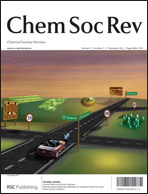Nanoporous metals: fabrication strategies and advanced electrochemical applications in catalysis, sensing and energy systems
Abstract
Nanoporous metals, a representative type of nanostructured material, possess intriguing properties to generate enormously promising potentials for various important applications. In particular, with the advances of fabrication strategies, nanoporous metals with a variety of superior properties including unique pore structure, large specific surface area and high electrical conductivity have fuelled up great interests to explore their electrocatalytic properties and greatly extend their emerging applications in electrochemical sensing and energy systems. This tutorial review attempts to summarize the recent important progress towards the development of nanoporous metals, with special emphasis on fabrication methods and advanced electrochemical applications, such as electrocatalysts, chemical sensors and energy systems. Key scientific issues and prospective directions of research are also discussed.


 Please wait while we load your content...
Please wait while we load your content...